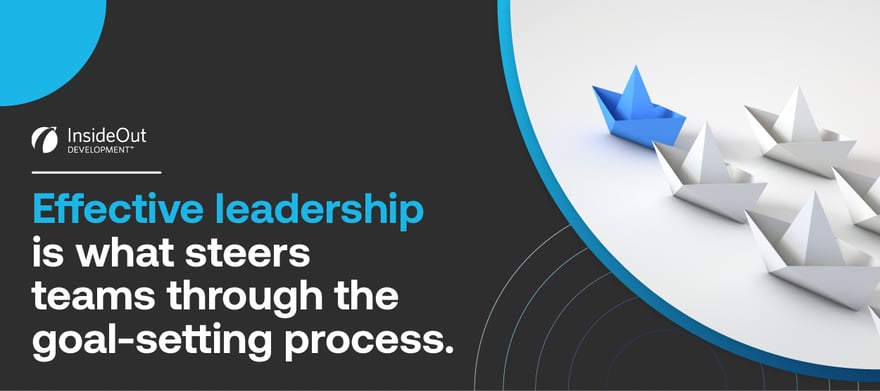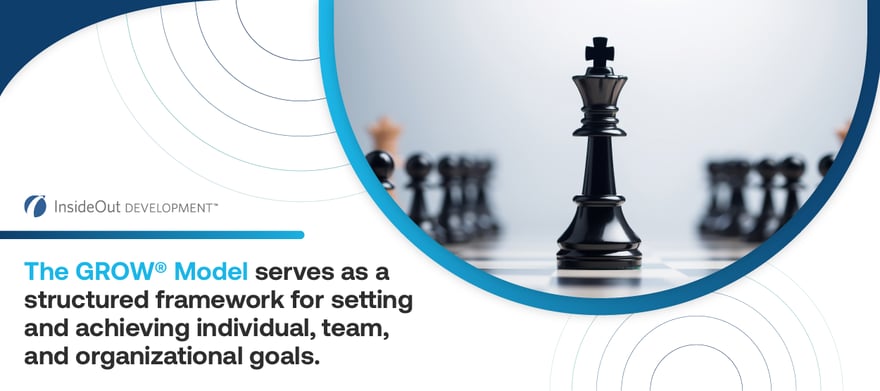In the realm of professional growth, effective leadership goes beyond task delegation and ensuring team members fulfill their roles. True leaders inspire and extract the best from their teams through consistent coaching and goal setting.
And we’re not talking about a one-off meeting to dictate goals; true leadership requires an ongoing commitment to provide support and encouragement and to keep team members' crucial objectives at the forefront of their daily endeavors.
It's not just about what needs to be achieved but understanding the why behind it. A strong “why” becomes the catalyst for natural inspiration and motivation.
Let’s delve into the intricacies of leadership, goal setting, and how a team's success hinges on the strategic guidance and inspirational prowess of its leader.
The Role of Leadership in Goal Setting

Effective leadership is what steers teams through the goal-setting process. Leaders act as the compass by providing direction and purpose to their teams and serve as the catalysts for aligning individual goals with the goals of the organization.
By ingraining goal-setting into the company culture, leaders can create an environment that encourages innovation, accountability, and continuous improvement. In fact, the connection between effective leadership, goal setting, and team performance is intricately interwoven.
A strong and effective leader not only defines clear and motivational goals but also engages in challenging coaching conversations, addressing issues in an empowering manner. This coaching-centric approach establishes a two-way communication channel, a hallmark of genuine collaboration, ensuring goals are not merely met but surpassed.
The GROW® model (Goal, Reality, Options, and Way Forward), serves as a structured framework for setting and achieving those goals. Leaders who use the GROW model are better equipped to guide their teams through a systematic process and make sure that their goals are Specific, Measurable, Achievable, Relevant, and Time-bound (SMART).

By combining leadership principles with the GROW model, leaders can create a solid foundation for goal setting that not only elevates individual and team performance but also cultivates a culture of continuous development and success.
Coaching and Goal Setting: 5 Tips for Leaders
1. Align Team Goals With Organizational Objectives
Leaders should explore strategies that integrate both team coaching goals and the long-term vision of the company. By establishing this connection, teams become a driving force in achieving organizational goals.
For instance, a tech company aiming to boost market presence through innovation might set an organizational goal to launch a user-experience-improving product. The software development team, aligning with this objective, may set a goal to implement cutting-edge features in their next release, linking team focus directly with the company's long-term success.
Synchronizing organizational and team goals not only enhances the strength of the group but also contributes significantly to achieving the goals of the company, whatever their industry may be.
2. Prioritize Collaboration
Involving team members in the goal-setting process ensures that there’s a diversity of perspectives. It breeds a sense of ownership and commitment, as well, and gives leaders the ability to understand different points of view.
Techniques like brainstorming sessions, team workshops, and daily check-ins help to facilitate the goal-setting process and lay the groundwork for a culture of shared responsibility and mutual support.
3. Encourage Ownership and Accountability

Effective leaders understand that true empowerment lies in encouraging team members to take ownership of their goals. This sense of ownership not only propels personal growth but also contributes to the overall success of the team.
You can create an environment where team members are motivated to go above and beyond to achieve their objectives, and this is brought on by implementing a sense of accountability when it comes to daily tasks.
By setting clear goals and expectations that are presented in an easy-to-follow, logical process, you can ignite the passion and fire of your team members to achieve big.
The clearer the goal, the more excitement to achieve it because confusion isn’t part of the equation. There are concrete steps to follow, and the goal — even if difficult — seems attainable, which inspires innate action and accountability.
4. Implement Coaching Strategies
Integrating coaching strategies into leadership practices is a key component of effective goal setting. Techniques like regular check-ins, constructive feedback, and mentorship help to guide teams toward knowing what’s expected of them and how best to achieve their goals.
This is where ongoing coaching plays such a powerful role — not only does it address challenges as they arise but it also provides opportunities for refining and adjusting goals in real-time.
Fostering a Coaching Culture
As mentioned above, goal setting is not a one-and-done thing. It requires consistent check-ins, feedback, and encouragement; in other words, it requires an ongoing coaching culture.
To implement a culture of coaching into your team’s daily routines, these guidelines can help:
- Schedule regular one-on-one meetings and team discussions
- Set clear and specific goals with individuals and the team
- Schedule weekly brainstorming sessions to allow team members to contribute ideas freely
- Lead by example — give constructive feedback and be open to feedback from your team
- Create a supportive environment where team members feel safe to come to you with ideas or issues
These elements help to create a proactive and adaptive approach to goal setting and maintain a consistent method of growth as your team and company evolve.
5. Celebrate Team Success

Acknowledging and celebrating team achievements is an integral aspect of effective leadership. Recognizing milestones and accomplishments — both big and small — helps to boost team morale and reinforces the value of effort, focus, and accountability.
Celebrating every success brings in a more positive and motivating work environment and encourages people to persistently strive for excellence.
Supporting Your Team Through Consistent Coaching
Leaders have a responsibility, not just to delegate tasks, but to lead by example and take on the role of aligning their teams with the goals of their organization.
By integrating coaching strategies like the GROW coaching model and cultivating an ongoing coaching culture, leaders can more effectively empower their teams to overcome challenges, adapt to change, and consistently elevate their performance. It’s all about team development, and the best way to support that initiative is through a consistent coaching approach.
Ready to bring out the best in your team? Get your roadmap here.





